People who
inspire us
Creative Spotlight: DoorDash’s Secret Menu Magazine
Secret Menu is an award-winning magazine for the restaurant community, founded on the belief that one restaurant’s story can help and inspire others. Each issue explores a different restaurant culture in a different city; from the rich Asian communities of Los Angeles to the vibrant hustle of Miami. Conceived by DoorDash and executed by MikeTeevee, we chat to the team about how this groundbreaking title is brought to life from behind the scenes.
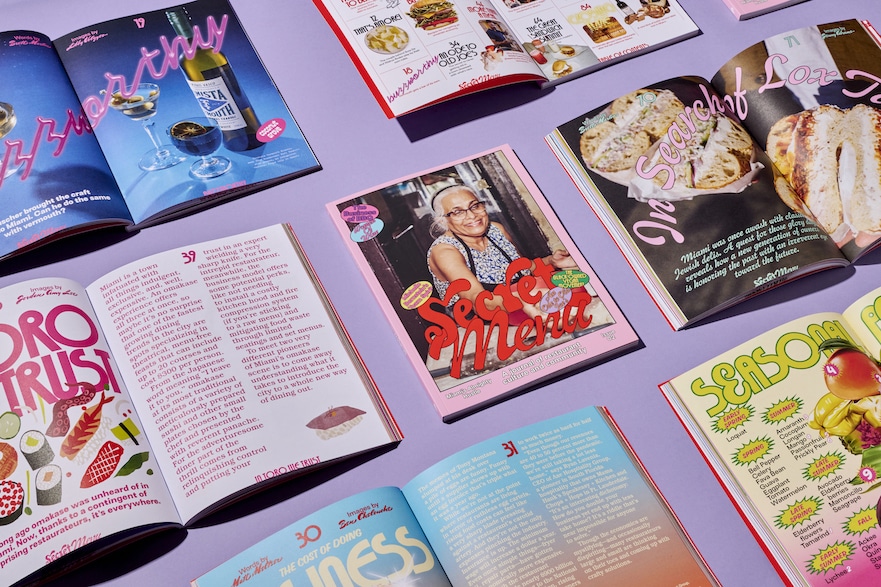
Congratulations on winning the prestigious D&AD Wood Pencil Award for your work on DoorDash’s Secret Menu! You were approached by the in-house agency team at DoorDash to develop the idea – how did that come about?
Ellen Utrecht:
Mariota and Jen Richardi started the DoorDash in-house agency together. Jen Richardi was Managing Director of the studio, Mariota is the ECD of DoorDash, and they came up with the idea. They knew they really wanted to make a magazine but didn’t really know how to go about doing it. When Jen moved to the marketing side and JP joined as MD they were able to make this project a reality.
MikeTeevee has worked with DoorDash for a number of years on many different styles of campaign, but this was our first print project together. I come from a print background, so that’s part of why Mariota reached out to me. Print was such an integral part of the first part of my career, and I really love making stuff that’s actually physically there, so this type of project is really exciting to me. Also, the quality of the printing was super important to me. We went above and beyond to get that right.
What was the core idea behind Secret Menu?
Ellen Utrecht:
The brief to Erin and David was very much, “We want to make something that people actually want to read and don’t want to throw away,” and I think we’ve achieved that with this bit of yumminess.
Erin Ruffin:
From an editorial perspective, our brief was to find the untold stories from restaurant cultures – the community of restaurant owners and chefs in different cities – and tell their stories in a way that would help other merchants. Maybe they would have insight into something that would benefit another merchant. Also, just to be appetizing and interesting for consumers as well!
David Amsden:
One thing I’ll add to that, the way I think about it is, a lot of times when we cover food and restaurant culture, we’re coming at it from the front of the house, so to speak. To put it in restaurant terms, what you see when you walk in the door, what your experience is. To make all that happen, there’s the back of the house. Secret Menu takes the perspective that the back of the house is not just essential, but endlessly fascinating. We aim to open up the door to the back of the house and celebrate everything that’s going on back there.

What were each of your roles on the project, and how did the process work?
Stacey Kawahata:
I was MikeTeevee’s Producer, liaising between DoorDash [Mike’s client], and Erin and David.
Erin Ruffin:
David and I were the co-editors, so we would brainstorm the story ideas once we had the theme of the issue, and then start reaching out to potential writers. We’re both writers who have worked in the industry for a really long time, so we have a pretty wide network of writers. We’ve both also written specifically in food and travel, so our backgrounds dovetail really well with this.
We then start coming up with story ideas and a list of our dream contributors and just blanket reaching out to everyone we know that’s connected to the theme of that issue. From there, it just snowballs.
David Amsden:
As we start getting copy in, we do what we can to make it the best possible article it can be, which is just going back and forth with the writer to make sure that what they aim to say, what they’re wanting to say is being said on the page. Sometimes, there can be some static between those two and it’s always fun to just shepherd it from infancy into adulthood.
Stacey Kawahata:
And then, what I think you also both did well was work with Studio Yukiko, our design partner, to not only figure out words on the page, but how the story and the words go together visually.
Erin Ruffin:
Yeah that’s a good point. Yukiko would handle look and feel but then, because we’re the ones that know what stories are coming in, we could guide them with specifics of each story and share some of the themes that are starting to emerge. The coolest thing is when you get a bunch of writers and photographers working on something and the work starts coming back. You’re like, oh, there’s this theme emerging, or this one dish keeps coming up. Then, that would inform design as well, which is really cool. It shows you the organic nature of editorial work.
David Amsden:
Sometimes we would put together a list of photographers, a list of illustrators, and we would assign work with some back and forth. For some of the stories we came up with, we would have a visual in mind, just a very rough cut. The ball starts with us in terms of editorial, and then it gets out into design and the writers.
Ellen Utrecht:
And I’m MikeTeevee’s Founder & EP, so I was making the coffee!
“Just holding the magazine and flipping through it, you would almost get a contact high of what it would be like to be in that town…”
It sounds like every story gets its own visual production. Can you explain a little bit about why you feel that’s important?
David Amsden:
With this magazine, the idea is that every issue will take place in a different city and every issue will have a different theme that we feel is right for that city.
We like the idea that the magazine would visually echo the experience of the city and the feeling of walking through the city. Every city has its own spirit, its own energy. It was really important to us from the very beginning that visually, just holding the magazine and flipping through it, you would almost get a contact high of what it would be like to be in that town, to be going from a sushi restaurant to a fun back alley restaurant, to a quaint neighborhood, to a business-y neighborhood, crowded streets, empty streets, the whole mix. The only way to do that is to really have a vibrant, diverse visual magazine that echoes that visceral experience.
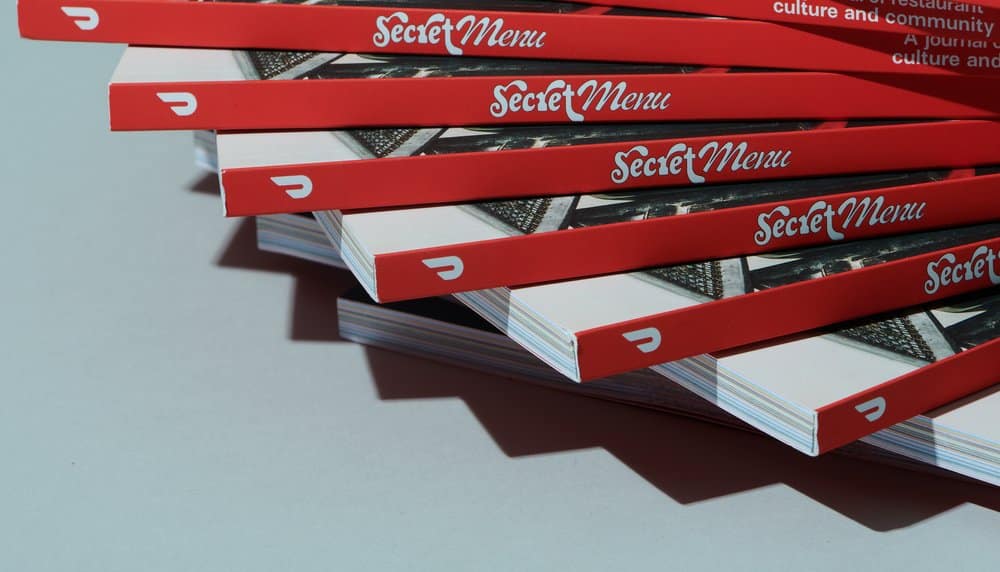
What you’ve been able to do is put it into a physical artifact that you can hold. It’s beautifully designed, it’s got weight to it. The design is super vibrant and current.
Erin Ruffin:
Yukiko is just so incredible at what they do, their bold and really current design, I think, gives some respect to the restaurants that are working so hard to contribute what they do to the city. Restaurants make cities what they are, and as soon as the city starts becoming a food hub, everything else grows from that. The design is so stunning and it really does justice to how hard it is to run a restaurant. I love that it’s not all beautiful food photography. It’s really rich and really vibrant and I think that was also a big thing for us editorially, just knowing how hard it is to be in the industry, especially coming out of COVID. If a restaurant survived the pandemic, it’s a testament to how hard they’re working. So editorially, we work really hard to do justice to the grueling work that the restaurant owners and the chefs are doing.
Ellen Utrecht:
It’s nice to go back to books and physical things that you want to keep. It goes back to wanting to create things that are actually for longevity. You have to make something worth keeping. So that’s why it should be something this beautifully crafted. If it wasn’t beautifully crafted, you’d just throw it out. Now, when you physically hold it, you really think, “Oh no, I can’t throw this out.”
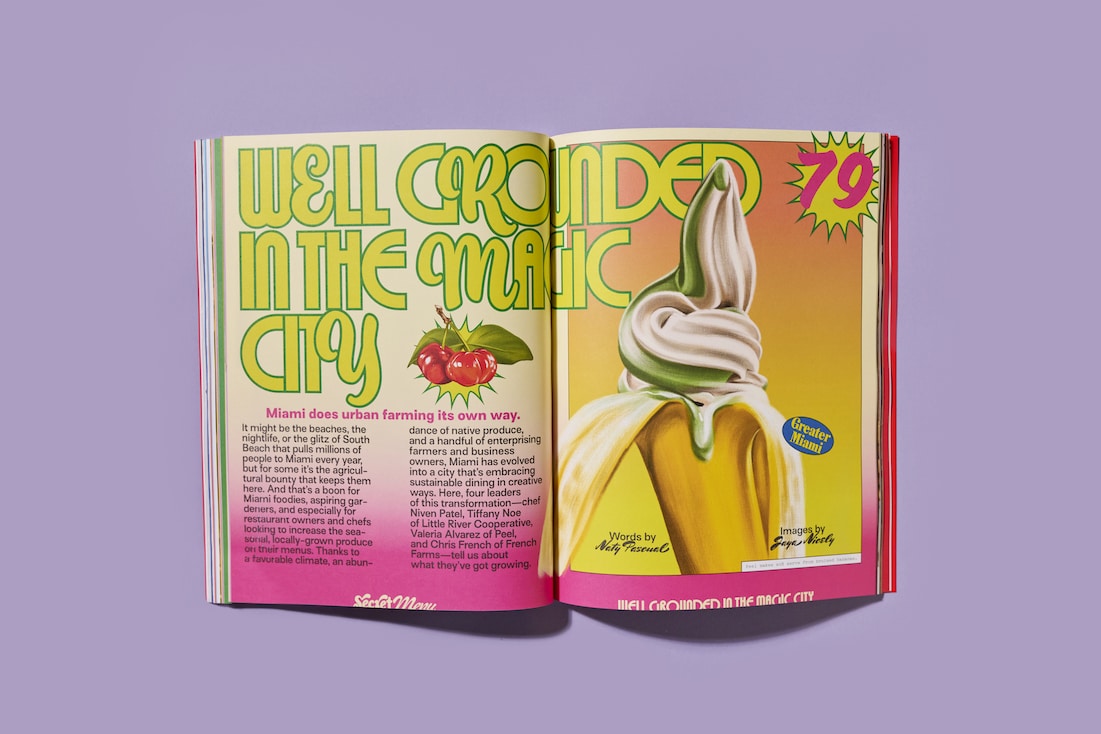
You’ve suggested in the past that food is the chrysalis of the cultural growth of a city. It’s the small players building things from the ground up and bringing a certain unique flavor that begin to build the city into a place where people want to be, want to live, want to travel to. That’s a fascinating insight.
David Amsden:
Well, if you think about it, and I think, since we had our introduction in the first issue, if you’re talking about a city you’re dying to go to or a city you’re dying to return to, you’re very often talking about a restaurant where you’re dying to eat at or a meal you’re dying to have again and share with friends. If you live in a city and you’re thinking about moving neighborhoods, you’re very likely thinking about what restaurants are around you. It is nearly impossible to overstate just how essential restaurants are to the day-to-day fabric of a city, and we think the magazine really reflects that.
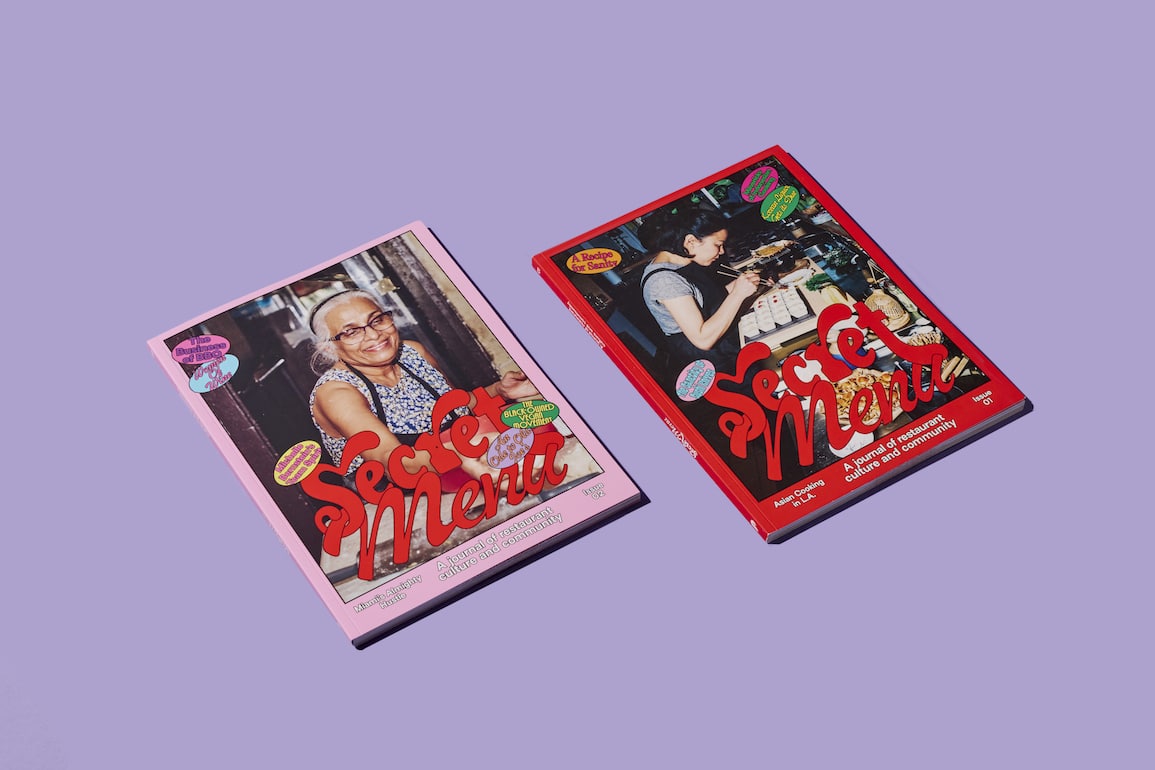
Tell us about the most interesting and exciting stories you’ve worked on. What have been some of your favorite things to write about so far?
Erin Ruffin:
Issue #1 was really exciting. Both issues are so good and they’re so different. It’s hard to compare or to pick one, but for me, focusing on the Asian food in Los Angeles was awesome because if you live here or you know LA really well, then you know how good the Asian food is here. It’s the best you can get outside of Asia and it was just really exciting to find those stories and just get to dive into them and into the people that have brought that food here. It was really great.
David Amsden:
The first thing that pops into my mind is a story in the new issue about the barbecue culture in Miami. That’s just one of these examples; a real joy as an editor is when you find a great writer who has a great eye and passion for a subject that you are unfamiliar with, and who is able bring it to life for you and, by extension, anyone that reads the magazine.
I think when people think about Miami, barbecue is not the first thing they think about. I certainly didn’t. When the writer talked to me about the relationship between dudes who just have a grill on the side of the street, no permit, and restaurants that emerged from that, and then the restaurants becoming a little bit more upscale, that as a phenomenon is fascinating.
What he did in that story and what makes me really proud to be part of publishing it is he gave it so much heart that you really feel. He really brings you into this world and these characters and the way they interact with customers, and by extension, the way they have become staples of the neighborhood. It’s just such a wonderful piece that is about something so small, the small barbecue community, but on another level, it tells a larger and less celebrated part of Miami’s culinary history. This is not something that just started in the past five, ten years. There were people migrating over from Georgia sixty years ago and setting up the first grill. I just love that piece and the writer did such a fantastic job.
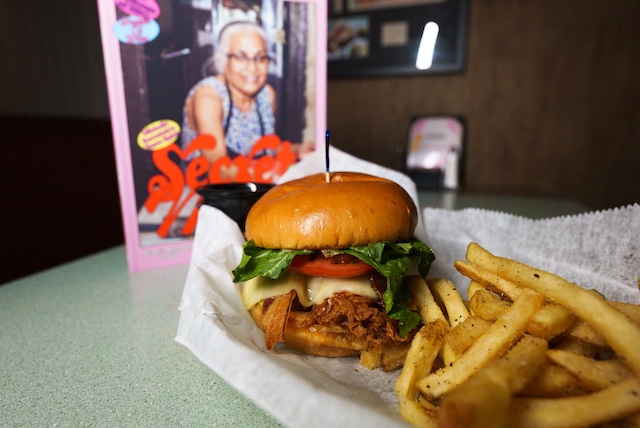
I noticed that often the origin story of someone that started a food business is founded in migration. Have you found that to be true?
David Amsden:
A subtext of our Los Angeles issue is that when you migrate to a new place, especially if you’re immigrating from another country, people want to cook for their communities. Their business starts very small. It’s something they know how to do and it grows from there and as a result, other people who are migrating get a job at that restaurant and go on to open up their own restaurants.
Erin Ruffin:
It’s interesting because you think about American food, but American food is now really mixed culturally.
David Amsden:
There is a joy a certain kind of person really feels, which is feeding people, and not just in terms of feeding them calories or delicious bites, but feeding them something deeper in their soul. When you talk to people, whether it is people running a relatively high end Michelin starred restaurant or something that is just off the cuff like the guy with the grill working the barbecue, there is a love of bringing people nourishment that goes beyond food that I find utterly captivating. Two issues in, thinking about the wildly diverse terrain we’ve covered, that does feel like a through line. Whether we’re talking about a twenty five year old hipster upstart or a stalwart who’s been around the neighborhood for twenty, fourty, fifty years, or in the case of Joe’s Stone Crab in Miami, over a century.
“There is a love of bringing people nourishment that goes beyond food that I find utterly captivating”
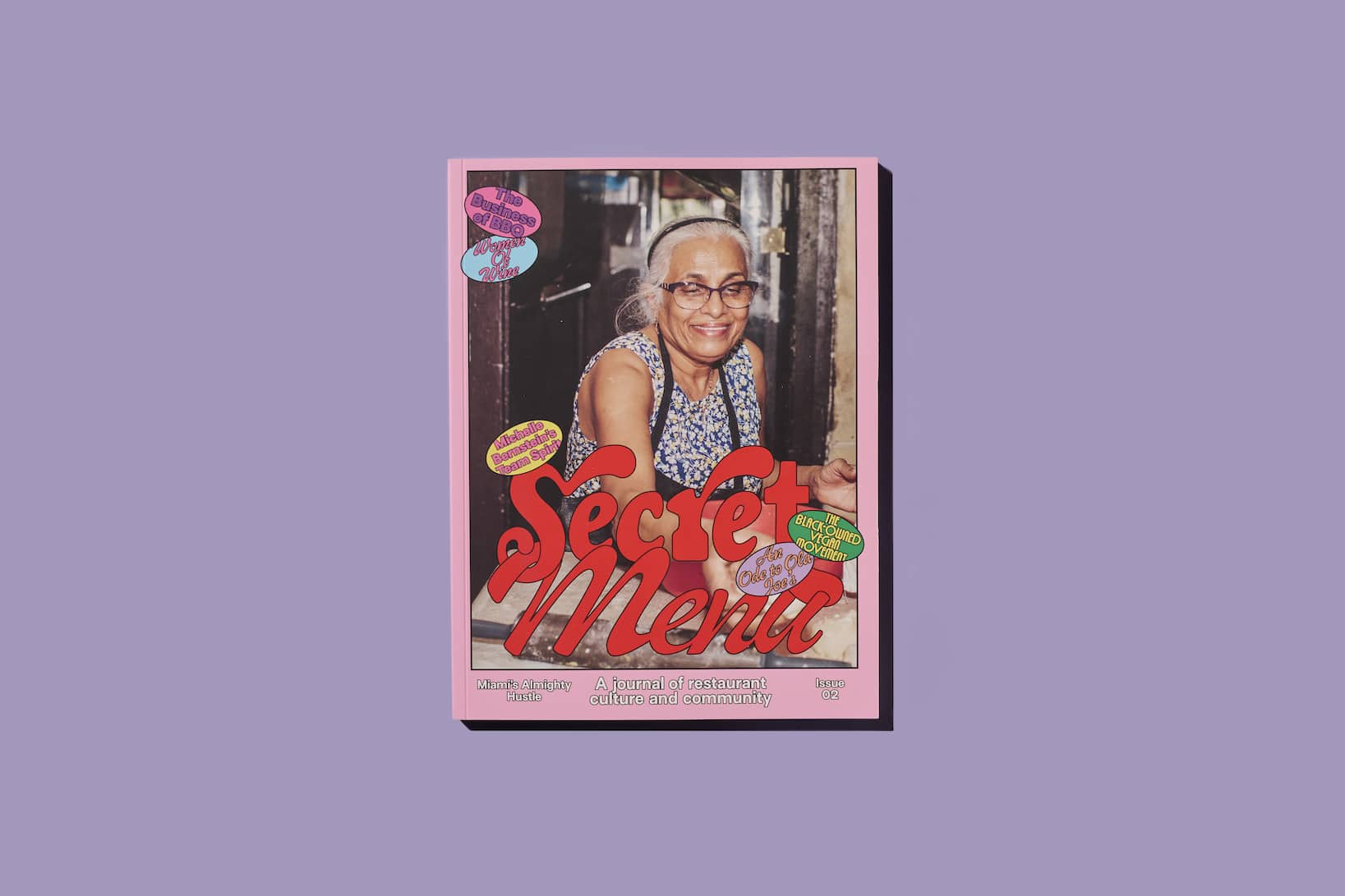
It’s a noble profession to bring someone one of their essential needs, and do it in such a way that you’re giving them a good time and creating a scenario for them to connect with the people that they’re with. It’s a beautiful thing.
Erin Ruffin:
It’s really awesome of DoorDash to invest in telling those stories from that perspective because it’s pretty rare that you get to hear those stories. We write about it in both issues, the challenges, really tough challenges of the job as well, not just all the highlights and the glory. As somebody who travels a lot and eats out in lots of different cities, it’s given me more respect for what they do.
David Amsden:
Yeah, it’s really fun to get to be a part of that component in a way. I don’t own a restaurant, I love eating in them and as someone who loves eating in them, anything that goes into them is inherently fascinating to me. What I love about our content, we peel back a couple extra layers and offer occasional insider recognition that other restaurant owners could relate to.
We did a story in the first issue on a great restaurant called Yang’s Kitchen here in LA, which was just booming from the day it opened. For a consumer, when you often see a line out the door, you just think, “Okay, they’ve cracked the code, they’re making it work.” Then, you go behind the scenes and you realize, no, the code is scrambled. They’re constantly working to actually figure out how to make this stay above water and really work. It was really fascinating to get to talk to them and have them open up that door. It makes me appreciate them and other restaurants all the more, but I love the idea that another restaurant who’s sitting there going, “My God, how are we going to deal with this? The produce bill is twice what we thought it was going to be when we created this model. We don’t want to completely revamp this. We want to, but how do we do it? Oh, look at this article. Here’s how someone else did it.” I love that we are creating that dialogue among restaurateurs.
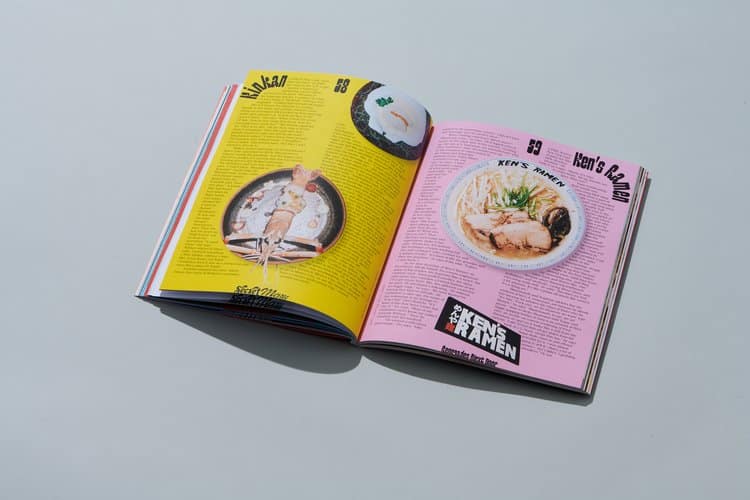
You touched on the chaotic nature of the food business. It takes a certain type of brain to thrive in that chaos and every day, day in, day out.
David Amsden:
Yeah. We’ve tried to address that and honor it in a few different stories. We did a fun feature in the first issue, a recipe for sanity, which was tongue in cheek. It was a chef talking, like they would be for a cookbook, but sharing “here’s the steps to stay sane in the midst of all that chaos”.
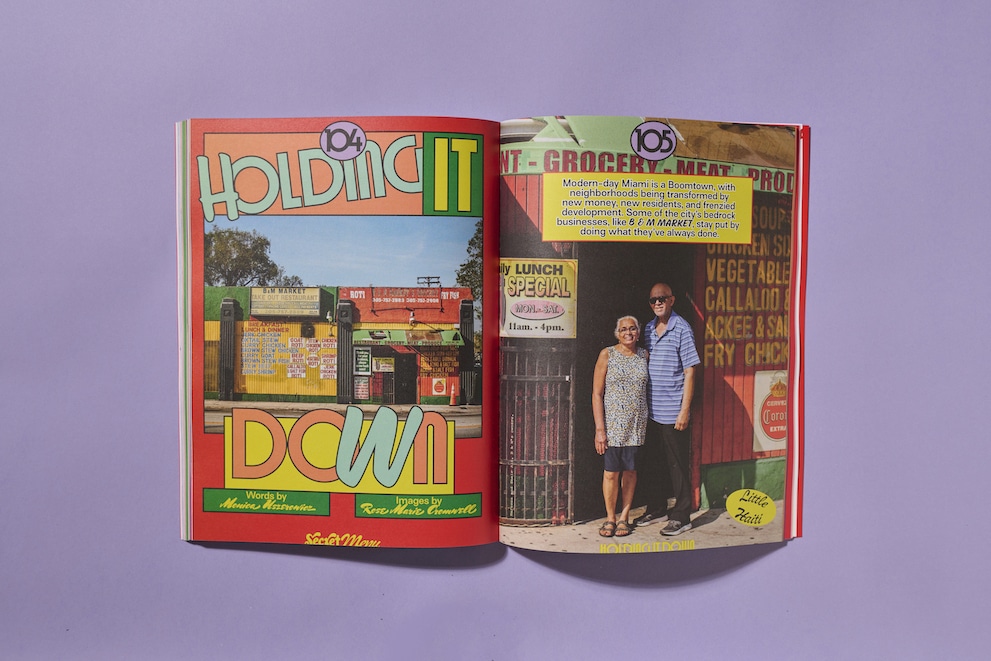
What has the feedback been since launch?
Erin Ruffin:
We’ve had really awesome feedback. Mostly, what we get is people like, “We want more copies. We want more copies.”
Stacey Kawahata:
We’ve received lots of positive merchant feedback. A lot of Doordash’s business model is built off of the ability for these restaurants to be on their app, and I believe it’s proven to be quite an efficient model for business acquisition.
David Amsden:
We’ve gone into some of the restaurants that we’ve written about and seen just how excited people were, not just to be featured, but the way in which their team were shown in context. Justin, who is the chef at Anajak Thai had just been named the best restaurant in Los Angeles by the LA Times, one of the best restaurants in the US by the New York Times, and he just raved about the magazine in one of those multi paneled Instagram stories and that was a real honor. Then, just from people in the media business that I’ve worked in my whole life, people are just loving it. It is this big, thick, beautiful print magazine that is telling stories in a fun new way. Also, now we have a great new fancy website that we’re really excited about.
Stacey Kawahata:
After the first issue, a very well known restaurant in New York reached out directly and asked “Oh, can you do one on us next?” – restaurants are inquiring.
David Amsden:
Definitely, it’s interesting when you see the traction. We’ve definitely had restaurants reaching out, saying “Hey, we’d love to be on your radar.” Writers and photographers are also reaching out and saying, “I love so much what you’re doing. I want to be part of this.” Those are the metrics, for me, when you’re doing something right.
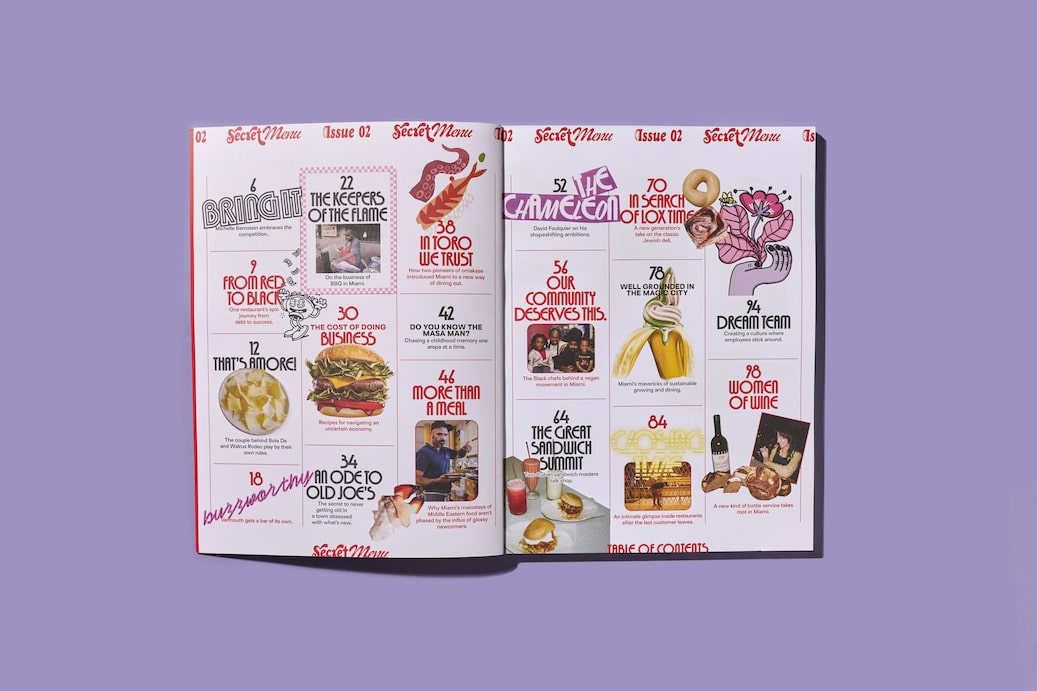
The advertising model is constantly evolving and it’s become a lot more important for big brands like DoorDash to think about advertising in a different way. This all points towards “branded entertainment”, which I guess is the category that Secret Menu falls into.
Erin Ruffin:
I was just going to say the distinction there for branded entertainment is that we really make this with the restaurant owners and the chefs in mind. That’s our starting place rather than a consumer who’s going to pick it up from a boutique and buy it. That has been a really unique challenge for us as editors because we’re used to writing and editing pieces that are meant to be read by a consumer. At first, that was a big challenge, but I actually think it’s made the magazine a lot better. Having that focus and that different perspective to it has really enabled us to think outside the box and to find more unique stories. Secret Menu is really written and edited and commissioned more with the restaurant owner and chef and the restaurant community in mind.
David Amsden:
The model is more like a brand operating as a publisher than a brand creating entertainment. We don’t work for DoorDash, and it’s a really interesting model.
Erin Ruffin:
That’s a really big distinction because in branded entertainment, you often are finding seemingly organic ways to talk about a brand and its features, but here, like David said, it’s more of the publisher model, so a lot of what we had to do with DoorDash was to create those boundaries so that it didn’t feel inauthentic and it didn’t feel manipulative to the reader.
For me, as a consumer, if I know that I’m being sold to, I’m just instantly turned off. I’ve worked with a ton of different brands doing editorial content and I keep that in the back of my head as I’m making it and working on it, that you either have to be clear that this is trying to sell something or you have to keep it really pure. I think it’s the middle, the in between zone, that’s not successful. Especially now, the consumers and the biggest buying power now is the young generation, and they want quality and they want authenticity, they want transparency. So that would be how I approach that. It really comes from just what I look for as a consumer.
We love this trend where thinking about marketing your company is less about, “Buy buy buy,” and more about, “What can we give back?”
Erin Ruffin:
We’re in a price-driven, luxury society where it’s more value exchange and value is the currency, so it is a better model to act in, but it’s hard for brands because it’s not the normal model for them. They are used to “here are the features, buy it at this price.” Stacey, you did all the heavy lifting on that for us with DoorDash. It’s a really unique way to approach this whole project, but I think it’s made it a lot better.
Stacey Kawahata:
Yeah, 100%. Working with the DoorDash studio is nice in the sense that you have creative counterparts that have an understanding of quality and what it takes to create an entertaining piece. Then, it’s just a matter of having that similar vision for creating something that isn’t like everything else that exists and doesn’t feel like an ad. That process always has potential for tension between “is this editorial or is this a marketing decision?” but because we started in the same place, we could always come back to that vision, and that helped a lot.
Ellen Utrecht:
I agree; we are so lucky that we have that relationship with the DoorDash team. Mariota and Jen really are experts at finding the balance between championing the brand while also thinking about value creation for the wider community. And I would say that Adriel Nunos is one of the most talented designers I’ve ever worked with. He was great at helping the whole team stay focused on our north star and really driving us forward.
Erin Ruffin:
And I think that a reader, whether they’re in the restaurant industry or not, they don’t care that DoorDash made it, paid for it, because the content is so good and because there aren’t these secret roundabout ways of talking about DoorDash. They really just have created this platform to celebrate the restaurants and the people that run them. So in that way, it’s great for DoorDash and it doesn’t matter to the reader that they’re a part of it. It’s not like the branded entertainment can sometimes feel like a little grubby or something. This is really proudly made by DoorDash, but it still feels really pure.
David Amsden:
It’s proudly published by them. I’ve worked in the most traditional print media my whole life, and this is not as different as someone would expect in terms of the firewall that is always there between the business side and the editorial side. It speaks really highly of DoorDash. What they are doing is really cool with this project in that realm. It’s a big leap.
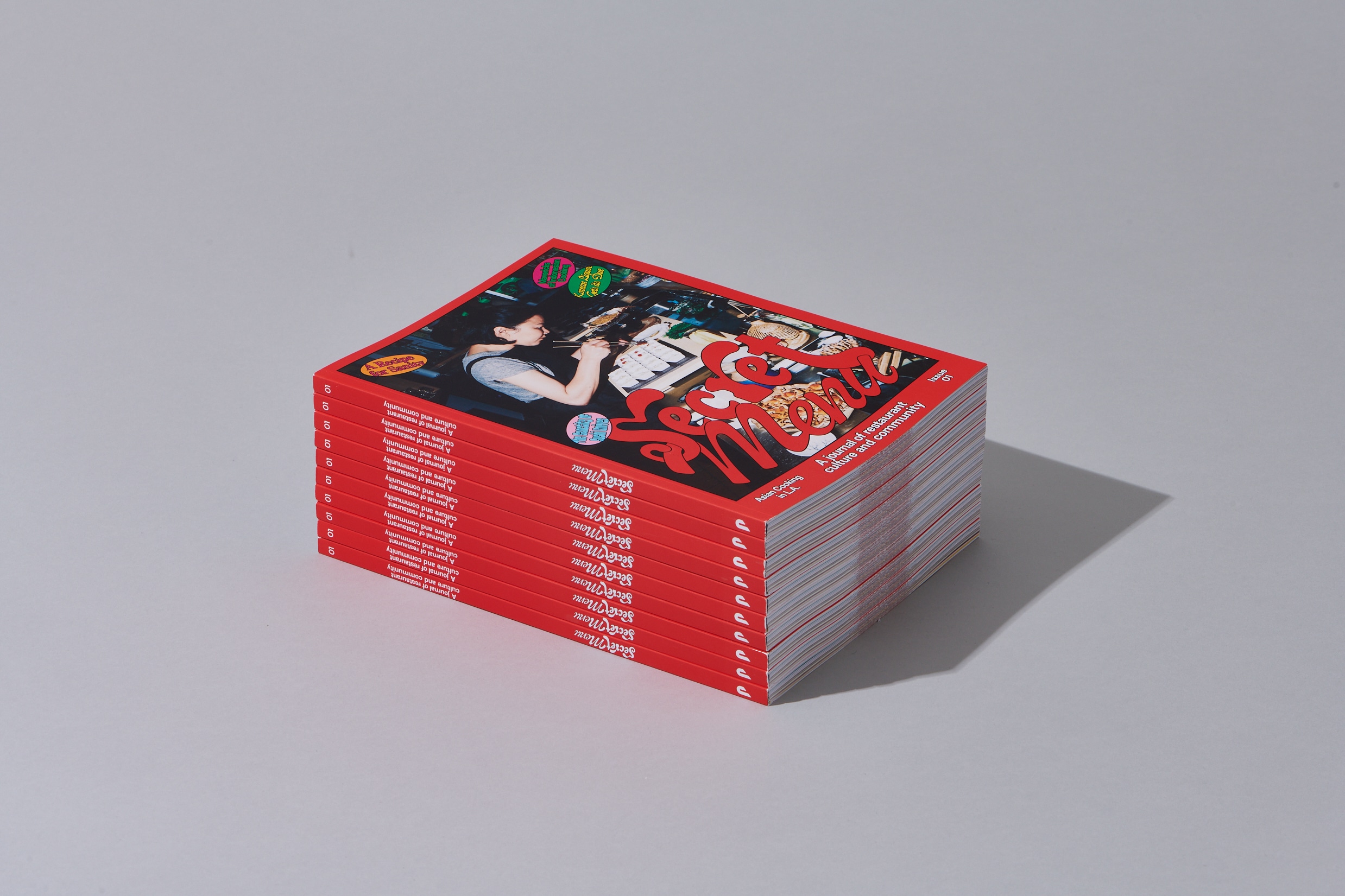
What is the future of this kind of content?
Erin Ruffin:
I think there is a huge future for content that is funded by brands. That’s my feeling. I think that the brands that are going to be successful are ones that will invest in good content like this. Unless something massive changes in advertising, I don’t see it going back to the old model. And because of the Internet, I don’t see the public being willing to pay for the content, what it’s worth, so I think the future is in the brands.
David Amsden:
Yeah. If you go back, even maybe 10 years ago, you saw a big rise in brands playing in this middle zone between “we’re doing something cool” and “we’re really actually trying to sell you something”. If it moves more toward “we as a company are very confident in what our product is and of course, we’re going to have a marketing team that is going to try to make the public aware directly of our product that we’re very confident in”, I think this kind of content goes really far and there’s a lot of room for it. In terms of the perception of a company and its ethos, I give DoorDash a lot of credit. To me, it seems like they have a lot of confidence in what they do as a company, which is to say, “hey, let’s do something really off piste here and make sure it is great”, and I can see the future being more companies going that route.
Check out the Secret Menu website to sample some of the finest content from Issue #2, and to find out about future issues.
